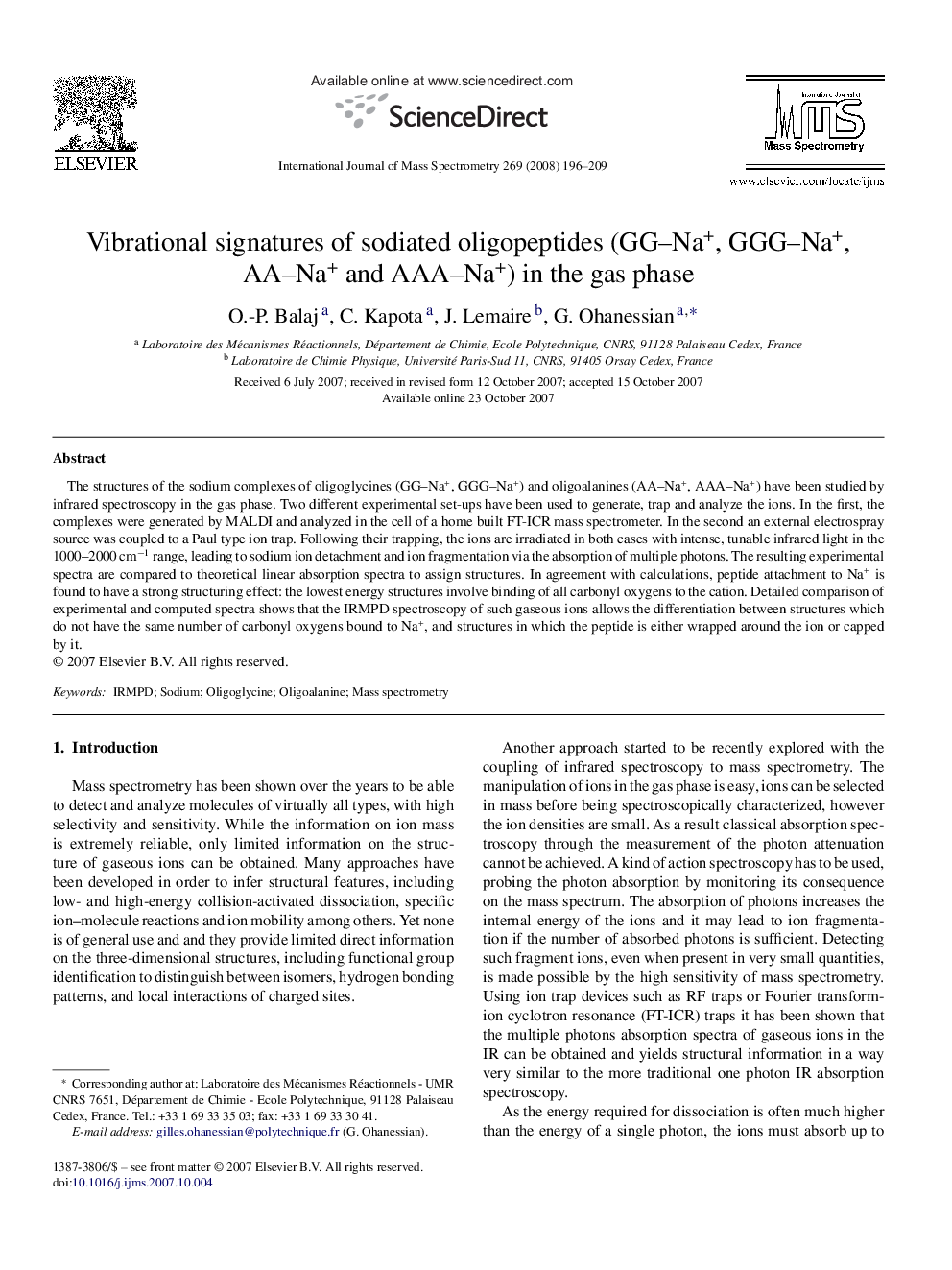| Article ID | Journal | Published Year | Pages | File Type |
|---|---|---|---|---|
| 1194919 | International Journal of Mass Spectrometry | 2008 | 14 Pages |
The structures of the sodium complexes of oligoglycines (GG–Na+, GGG–Na+) and oligoalanines (AA–Na+, AAA–Na+) have been studied by infrared spectroscopy in the gas phase. Two different experimental set-ups have been used to generate, trap and analyze the ions. In the first, the complexes were generated by MALDI and analyzed in the cell of a home built FT-ICR mass spectrometer. In the second an external electrospray source was coupled to a Paul type ion trap. Following their trapping, the ions are irradiated in both cases with intense, tunable infrared light in the 1000–2000 cm−1 range, leading to sodium ion detachment and ion fragmentation via the absorption of multiple photons. The resulting experimental spectra are compared to theoretical linear absorption spectra to assign structures. In agreement with calculations, peptide attachment to Na+ is found to have a strong structuring effect: the lowest energy structures involve binding of all carbonyl oxygens to the cation. Detailed comparison of experimental and computed spectra shows that the IRMPD spectroscopy of such gaseous ions allows the differentiation between structures which do not have the same number of carbonyl oxygens bound to Na+, and structures in which the peptide is either wrapped around the ion or capped by it.
